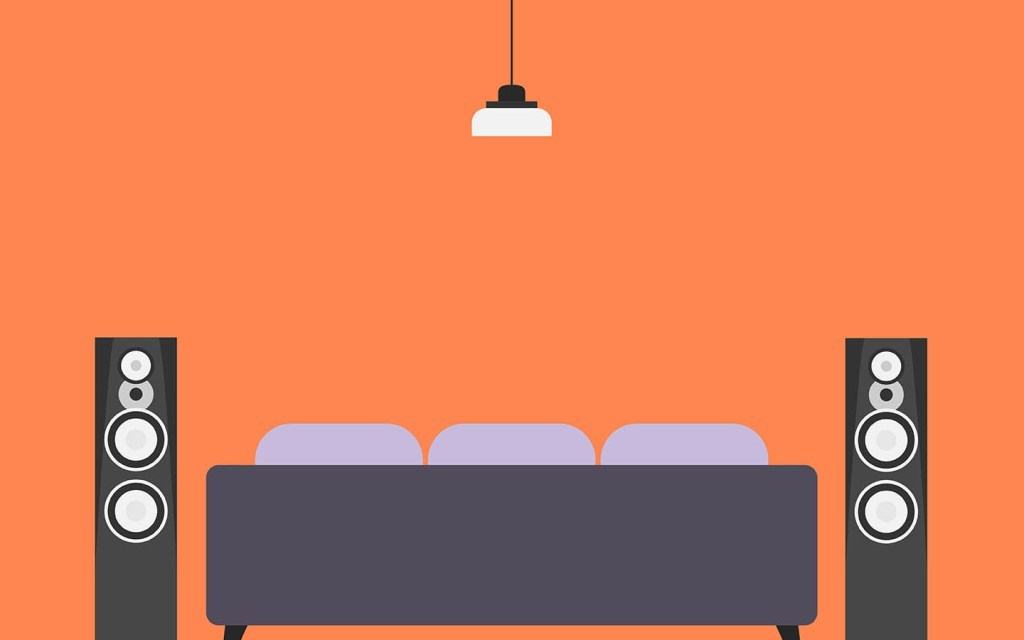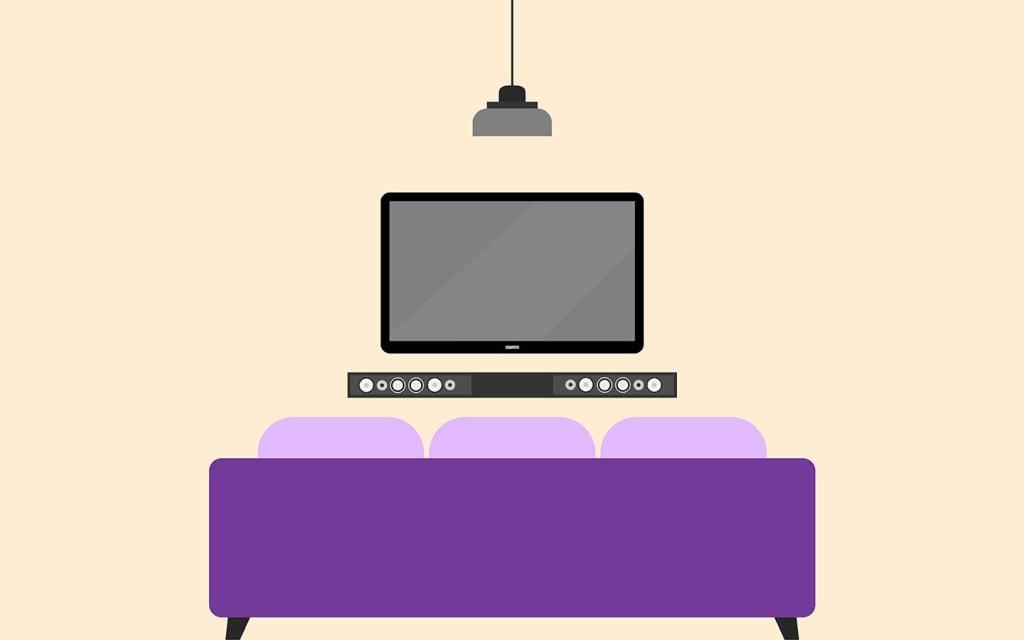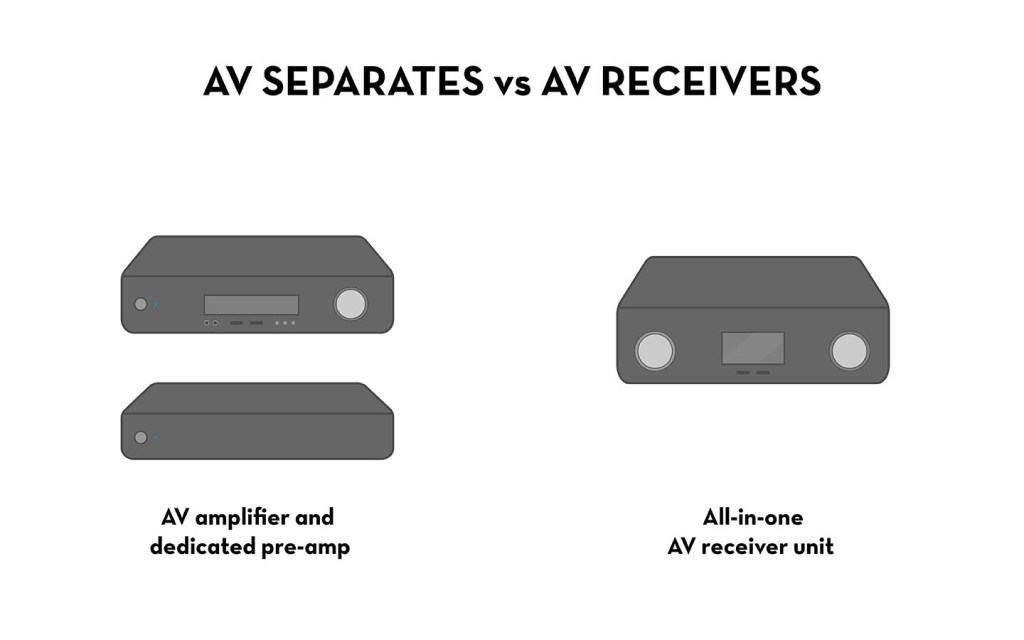In one of his (slightly) less gloomy moments, the philosopher Friedrich Nietzsche proposed that ‘without music, life would be a mistake’. Nihilism aside, there is something to be said about the emotional pull of music that it holds such an important place in many of our homes. From the radio in the kitchen to the elaborate sound-systems in our living rooms, many of us spend our days surrounded by music as we go about our daily tasks.
Over the years, a number of means of listening at home have come and gone and, in some cases, returned: vinyl, cassette tape, CD, MP3 player and now streaming platforms. The current music lover might well have their music collection across a number of platforms – both physical and digital – which can be challenging to manage. Even for those who mostly appreciate music as background ambience, being able to enjoy music around the house rather than just having a source confined to specific rooms can make a property a more pleasurable space to spend your time in.
What type of speaker is right for your home audio?
Speakers are one of those things that can cost you £100 or £10,000, depending on how far you’re willing to dip into your pockets in pursuit of audio perfection. When applied to a whole-house set-up, there are clear advantages to picking certain types of speaker to deliver maximum performance, while in other scenarios a less expensive option might suffice.
In all of the cases above, it is worth thinking about how much the proposed speakers are likely to be used before specifying them, as well as whether they will be used for occasions when people will be highly focused on the audio (if they are part of a home cinema or listening room, for example) or whether they will just be used for casual listening.
Bookshelf/standmount speakers
This type of unit generally has a small form factor and can sit either attached to a stand or placed on a shelf, preferably at ear level. Although different models can vary hugely in quality, such devices tend to offer precise mid and high frequency sound with solid attack, although they will need to be paired with a subwoofer in order to fully bring out the bass channel in an audio file.
Typically, smaller rooms will benefit from bookshelf speakers, but they will still protrude out into the room to an extent and homeowners will need to anticipate the space they will require ahead of installation, particularly if a sub is also desired.
Floorstanding/tower speakers 
These speakers incorporate a multi-drive set-up (tweeter, mid-range, bass driver) and will generally deliver the most complete overall sound of a stand-alone speaker, with more frequency definition and therefore more clarity in the audio. Typically, these speakers are set up in pairs and, like bookshelf speakers, vary hugely in quality depending on model and price. Most floorstanding speakers have a boxy, tower-like look to them, although there are notable exceptions, such as Bowers & Wilkins insane snail shell-style Nautilus unit.
Floorstanding speakers are generally suited to spaces designed for dedicated music listening, although they could potentially be incorporated into media rooms or home cinema scenarios in tandem with other devices.
Ceiling speakers

These are a popular choice in homes where audio is desired, but the occupant would prefer a discrete, out of the way audio system. This type of unit can save considerable space in smaller rooms and offers an elegant means of keeping wires securely out of harm’s way.
While this type of speaker unit will generally deliver a reasonable level of sound, they do not deliver the rich bass and overall breadth of floorstanding speakers or a bookshelf/sub-woofer combination, unless combined with a sub itself.
On a safety level, it is important that an installer considers the building’s fire regulations when specifying ceiling speakers – or, indeed, any unit installed partly or fully in the wall or ceiling cavity – as the unit itself can be a hazard if not covered by an intumescent fire hood. While this will not always be necessary (depending on the construction and make-up of the property), it is always worth asking your installer or site manager during the planning stage to make sure that all speakers will comply with building regulations. Otherwise, in the case of fire damage to the home an insurer might have grounds to refuse a claim.
Invisible (ceiling/in-wall) speakers
The significant advantage of putting speakers into the ceiling and/or in the walls is that they remain out of sight, which opens up the possibilities for room design. A drawback of invisible speakers is that, as they sit behind the wall, this will usually have a detrimental consequence on audio quality. The surface finish and ceiling construction will play a significant role in determining the overall effect. While certain units are designed to accommodate no more than a very thin layer of plaster – leading to less disruption of the audio and a cleaner, deeper sound – a sub-woofer (or, as a minimum, a ‘bass enhancer’) is definitely required for a well-balanced sound.
While in-wall units have traditionally received a bad rap from those in the audio world, the quality that can now be achieved makes it a solid option for many rooms in the house where it will be used for background sound, such as in the kitchen or a home office. In-wall speakers that sound better than many mid- and low-end floor-standing or bookshelf speakers do exist, but it is all a question of price: with audio, you will generally get what you pay for in terms of quality.
“With conventional speakers, placement is critical; to be able to fill a room with sound you have to have multiple speakers to cover an area with sound,” explains Richard Newlove, Managing Director at Amina Technologies. “Invisible (vibrational panel) speakers behave in a different way, allowing for fewer speakers in less critical positions.
“Peace of mind for a customer is always an issue for invisible speakers. External protection means that, if anything were to go wrong, all you would need to replace would be the protection device in the rack – the speaker never has to be touched.”
Soundbars
 Long horizontal speaker systems with multiple drivers, soundbars are often touted as an alternative for surround-sound speaker configurations in media rooms or for the (admittedly poor) speakers that come embedded in most televisions. They tend to be a popular low cost option for DIY projects, as they are relatively easy to install and offer audio that slightly resembles surround sound.
Long horizontal speaker systems with multiple drivers, soundbars are often touted as an alternative for surround-sound speaker configurations in media rooms or for the (admittedly poor) speakers that come embedded in most televisions. They tend to be a popular low cost option for DIY projects, as they are relatively easy to install and offer audio that slightly resembles surround sound.
While better than the in-built audio in televisions, these devices will rarely come close to replicating the audio quality of a proper speaker set-up. Some, but not all, soundbars will come with a sub-woofer to add a bass layer to the soundstage.
Subwoofers
Designed solely for replicating bass, these are vital components for when you need a more powerful, rounded sound that can’t be achieved by either in-wall or bookshelf speakers or soundbars. They are also a vital component of a home cinema, providing movies with a welcome boost at the low end of the audio spectrum.
The downside of most subwoofers is their size: they tend to be fairly bulky, floorstanding units that can be difficult to hide in a room. As such, many installers find creative locations, such as in sofas or behind false walls with an acoustically transparent covering, to hide them out of sight and free up more space in the room.
Amplification and processing
“If you take a bale of hay and tie it to the tail of a mule and then strike a match and set the bale of hay on fire, and if you then compare the energy expended shortly thereafter by the mule with the energy expended by yourself in the striking of the match, you will understand the concept of amplification.”
William Shockley, co-inventor of the transistor and Nobel Prize winner
Ever since the early days of radio, the need for some sort of amplification for boosting electric current and scaling up the volume of the music without distorting it. While not every audio output needs to be run through an AV receiver, for surround-sound, multi-speaker set-ups and instances where high-fidelity audio is desired, having a decent amplification system is a definite aural upgrade from a sound bar or stand-alone speaker unit.
An all-in-one AV receiver can handle more than just multi-channel sound; it is responsible for video processing (and upscaling), bass management for speakers and even – in some cases – 3D audio distribution. While AV receivers are generally a relatively stable technology, many modern AVRs offer HDMI, Bluetooth, AirPlay and WiFi connectivity built-in, allowing them to handle a whole host of wired and wireless sources coupled with multi-room AV distribution.
Another option for audiophiles is to opt for a split set-up, with separate units for the pre-amplifier and the amplifier. Split units can be upgraded individually and, as dedicated devices, do not need to compromise on part quality. Definitively separating high and low voltage operations is always a positive step, although AVRs will often isolate these operations as a matter of course.
For home cinema applications, a split set-up also allows devices to be stacked in order to deliver the raw performance required for a truly premium audio installation. The downside of this approach over an all-in-one AVR is the larger physical footprint required to accommodate them without any overheating problems, as well as the myriad of wires needed to connect everything up. However, this is easily mitigated by installing a properly cooled rack in a central hub to accommodate all of the house’s AV gear.
What means can you use to control home audio?
While it is possible to manage each of your audio devices throughout a property using a number of interfaces, the larger the property gets, the more useful it is to have at least some degree of consolidation with regards to control. Using Google Chromecast Audio or Bluetooth to play music allows you some level of control, meaning you can manage and send music to a number of speakers through your phone. Some speakers come with Bluetooth control embedded, although these tend to suffer from needing to be always connected, represent a compromise in terms of audio quality and can rapidly drain your phone battery with prolonged use.
Along with voice-controlled smart speakers, these systems are good if budgets are extremely tight and are useful for adding smart control capabilities to older speakers. Yet these systems are generally not designed with whole-house control in mind and, as such, are not necessarily easy to scale up to accommodate all of the audio systems in the house.
The next step up is a whole-house wireless audio system, of which the best-known consumer option is undoubtedly Sonos. As this relies on a wireless mesh to stream audio between speakers and from the internet, as well as using the property’s on wifi signal, it is suitable for large houses and can stream up to 32 sources at the same time. While Sonos sells a range of wireless speakers, it can also add streaming capabilities to non-Sonos audio set-ups with Sonos Connect.
Sonos is primarily controlled through its app, although it can also be controlled through a number of music streaming apps and a number of control systems such as Savant.
For residences that rely on wired speakers, there are a number of companies that offer multi-room audio systems that can be integrated into a unified control system, such as Crestron’s Sonnex audio distribution system. Located in a house’s server room, these units can provide a link between all of the speakers in a property and multiple wired and wireless sources, allowing all kinds of music to be played across the entire property. The obvious downside is that the property will need to be wired during construction, although this makes little odds if cables are already being run for other services such as video distribution and lighting.
Do cables matter?
Just as with speakers, homeowners can spend an awful lot of money on speaker cables in an effort to improve the sound signal running into their speakers. The audiophile community is largely divided as to whether ultra-premium wires are worth the expense and there are several ‘myths’ that surround stereo speaker cable – including that cables need to be the same length and that wires should be suspended off the floor using cable lifters – that claim to improve sound. At worst, such ideas are merely ‘black magic’ solutions for making a quick buck; at best, they will often make little difference to the end result.
“There are more important things to worry about, such as how you run the cable, making sure you keep it away from sources of electromagnetic interference and correctly specifying the gauge of cable,” explains Ryan Ovens, Projects Director at Andrew Lucas London. “As long as the cable is of good quality (i.e. good sheath, low resistance and well manufactured) then, technically speaking, there is little benefit to be gained with super-expensive cabling.”
Design considerations for home audio
The available space in a room will greatly affect not only what speaker types are viable options, but also how they will sound. A general rule is that speakers should be appropriate to the room they are in, while rooms should always undergo some form of acoustic treatment to reduce the amount of sound being reflected. Granted, it is possible to use amplifiers or an AVR to adjust the acoustic settings, but this simply equalises out problem frequencies and boosts ones that have been lost to the room, rather than a true fix of any fundamental audio balance issues.
It is worth noting how different materials affect the quality of sound in a room: kitchens and bathrooms, which tend to have hard, reflective surfaces, tend to offer more echo and messier acoustics than a room with soft, absorbent furnishings. Sound is inevitably reflected around a room once emitted and will then be at the mercy of its environment in terms of how it then reaches a listener; as such, choosing different materials and adding acoustic panels can drastically change the nature of the sound reaching the ear.
For achieving consistent sound and a generous sweet spot in a room, bringing in a qualified professional to acoustically treat a room is generally the easiest option. Optimising the delivery of sound in a room means that the homeowner can get the best possible performance out of their audio equipment which, after all, is not an inconsiderable investment.

